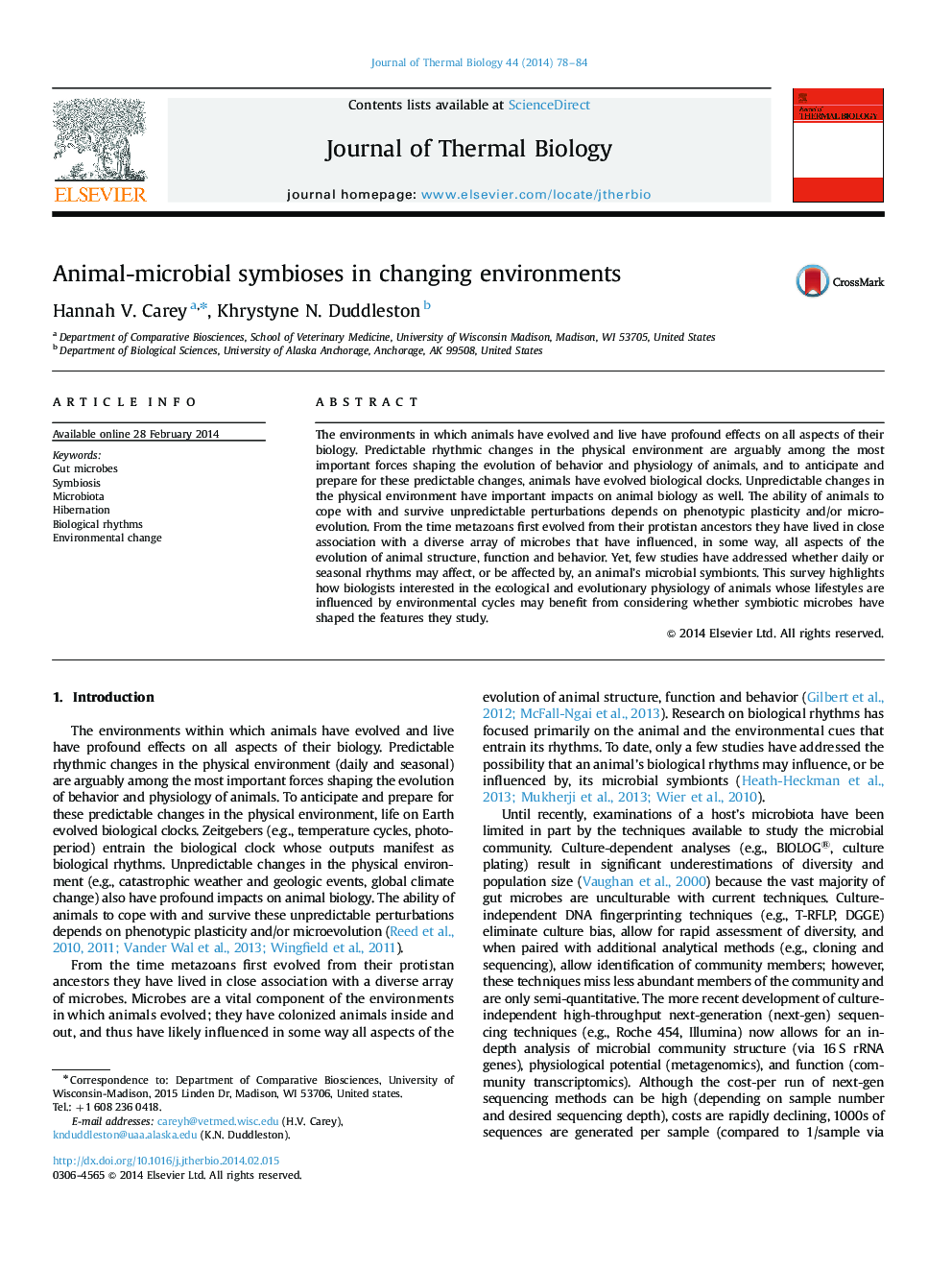| Article ID | Journal | Published Year | Pages | File Type |
|---|---|---|---|---|
| 2842911 | Journal of Thermal Biology | 2014 | 7 Pages |
•Biological clocks anticipate and prepare for predictable environmental changes.•Unpredictable environmental changes also impact animal biology.•Microbes can influence many aspects of animal structure, function and behavior.•Microbes may influence or be influenced by host responses to environmental change.
The environments in which animals have evolved and live have profound effects on all aspects of their biology. Predictable rhythmic changes in the physical environment are arguably among the most important forces shaping the evolution of behavior and physiology of animals, and to anticipate and prepare for these predictable changes, animals have evolved biological clocks. Unpredictable changes in the physical environment have important impacts on animal biology as well. The ability of animals to cope with and survive unpredictable perturbations depends on phenotypic plasticity and/or microevolution. From the time metazoans first evolved from their protistan ancestors they have lived in close association with a diverse array of microbes that have influenced, in some way, all aspects of the evolution of animal structure, function and behavior. Yet, few studies have addressed whether daily or seasonal rhythms may affect, or be affected by, an animal’s microbial symbionts. This survey highlights how biologists interested in the ecological and evolutionary physiology of animals whose lifestyles are influenced by environmental cycles may benefit from considering whether symbiotic microbes have shaped the features they study.
